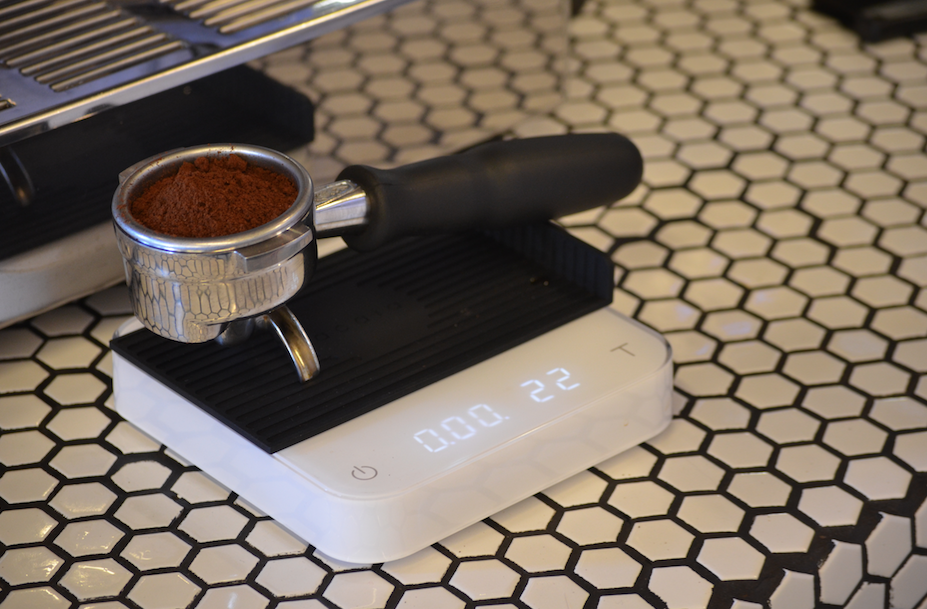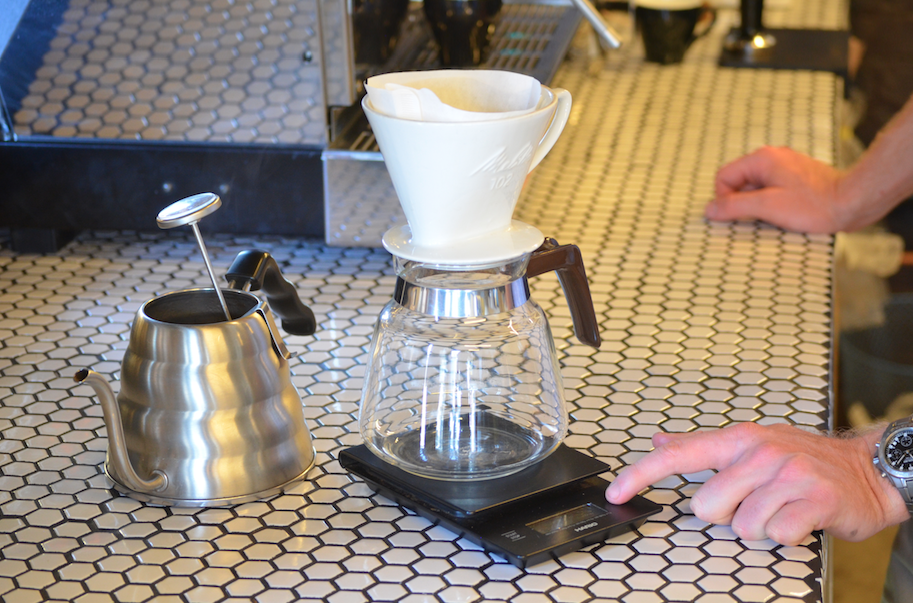Let's get technical: What's the benefit to weighing your coffee when you brew?
Words by Daniel Erasmus
The base question behind this article is "why should I care about weighing my coffee?" a question I only asked myself about three years ago. My most simple answer would be, because weight translates directly into flavour. So if you want your coffee to taste better, you need to weigh it. I was demonstrated the importance of this when I implemented using a scale in the cafe, and got an overwhelmingly positive response from the customers. Over the past two years we have seen a major focus from manufacturers, on integrating weight measurement into their products. Even phasing out volumetric machines in favour of gravimetric. Why? Weight is a necessity in the world of specialty coffee, where an extra five grams of water could spoil the cup, ruin the customer’s expectations, and waste very expensive coffee. Small examples are: weight is more reliable than volume, volume changes with temperature. Weight will give you a consistently good cup when working with a changing product like coffee, which may have a different level of solubility from one roast/day to the next. Which leads us to your next question, "how do I do that?".
First you need to understand what weighing your coffee encompasses. Then a prerequisite is being familiar with taste, and knowing what you want to taste in your cup. Whether it be espresso, or alternate brew, you will have three weights to measure during any brew: coffee dosage, end yield, and water. For me, time as a factor in brewing, is slowly losing relevance. Volume is obsolete. I have found that weight is a more reliable parameter to work with. I will not be addressing time at all in this article. Neither will I be addressing grind size, although it plays a large part in flavour, we will work on one concept at a time.

Dosage
Dosage is your dry coffee weight; the amount of coffee that you grind into any type of filter, before extraction. Your yield calculations are based on this dose weight. All brew methods have a recommended weight that you will start with. You can alter this either up or down to get your preferred weight. But once it is set, do not change it. Keeping in mind that for something like espresso, there is a fairly strict minimum, and maximum weight that you need to be dosing. In general, I like to stick to manufacturer's recommendations, but there are exceptions to the rule, for example, I generally push it, and dose 20.5g into the LM 17g baskets. This also depends on coffee density, and is mostly applicable in espresso.
Yield
Yield is your wet coffee weight, post extraction. Yield is the espresso in the cup, or the drip coffee in the glass jug. Explaining yield and its effect on what you taste, can become quite lengthy, but here are the essentials: The longer you extract for, the more yield you will have. The shorter you extract for the more strength you will have, and vice versa. Once you understand how the two work against each other, you can begin to control what you get in the cup.
You would typically work out a dose to yield ratio, which would determine your yield weight. This could be as simple as 1:2, or as you begin to get more specific, something like 1:1.75 Then it is as simple as putting a scale under the coffee receptacle, taring it, and starting your brew. stop your brew just before it reaches the required weight. In order to work out how early to stop it, you will have to work out the delay of in-air espresso weight, from porta filter to scale. (based on what you want to taste)
Water
I might garner some criticism for including water weight as a major factor, allow me to put forward my reasoning. If you weigh your water before you brew, you can subtract that weight from the final yield weight. This will give you an approximate total dissolved solids (TDS) weight. Your TDS determines the amount of flavour in your cup. I say approximate because there will be a small amount of water left in the coffee you used, and even if you subtract that weight from your original water weight, the dry coffee you used has also lost weight as it extracted. To be 100% on the mark, you need a refractometer. But for the 95% of us who can’t afford that kind of equipment, this method is a fairly good way to do it.
Tools
The amount of scales out there are endless. They range from amazing to terrible. The bottom line is; a scale that is not perfect, is not going to give you a perfect reading, therefore is not going to give you a perfect brew. So you may as well stick with a shot glass or a beaker. My preference lies with Acaia scales. They are waterproof, super accurate with negligible lag, charge via usb, have extremely long battery life, and are quite indestructible. If that's not in your budget, then the Hario and Brewista scales are also excellent options at a more affordable price point.

Disclaimer
This is a fairly lengthy disclaimer, and here are the reasons why. Because coffee is such a subjective product. Because there are many more variables than just weight, that affect how your cup tastes. Because each individual enjoys a different style of cup to the next. Last but not least, because weight encompasses, dose, yield, and in my case TDS (which ties into yield - so hard not to be ambiguous), which are all subject enough for being articles themselves. What I have aimed to do, is give you a better understanding of one facet, of what happens when you combine water and coffee in the hope that this information, coupled with more knowledge, will manifest itself as a tastier cup of coffee. Whether it be in your coffee shop, or at home.